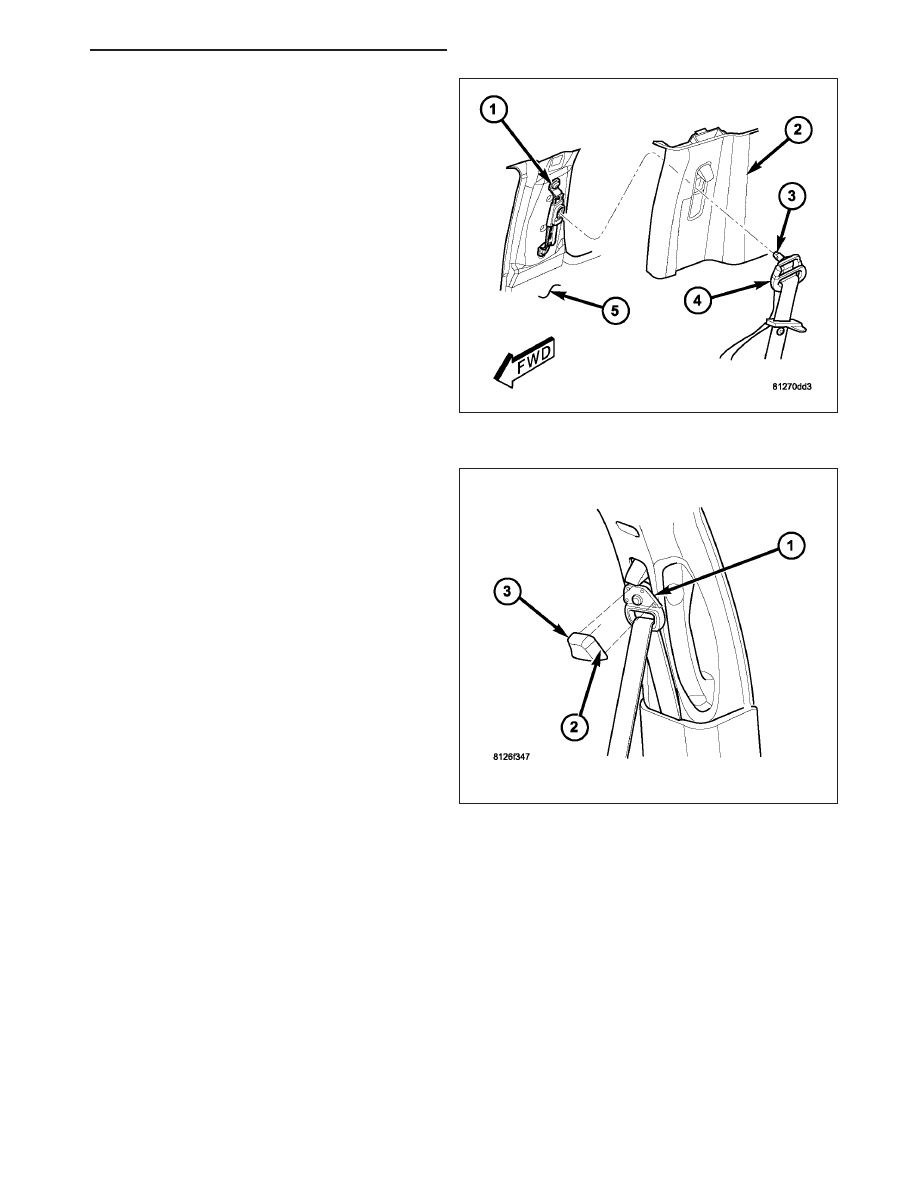Dodge Durango (HB). Manual - part 566

3. Reinstall the upper trim (2) onto the inside of the
C-pillar (5). (Refer to 23 - BODY/INTERIOR/C-PIL-
LAR TRIM - INSTALLATION).
4. Position the seat belt turning loop (4) to the height
adjuster (1) on the upper C-pillar.
5. Install and tighten the screw (3) that secures the
turning loop to the height adjuster. Tighten the
screw to 39 N·m (29 ft. lbs.).
6. Engage the tab (2) on the lower edge of the trim
cover (3) in the slot below the screw in the turning
loop (1). Then press the upper edge of the trim
cover over the top of the turning loop until it snaps
into place.
HB
RESTRAINTS - SERVICE INFORMATION
8O - 533